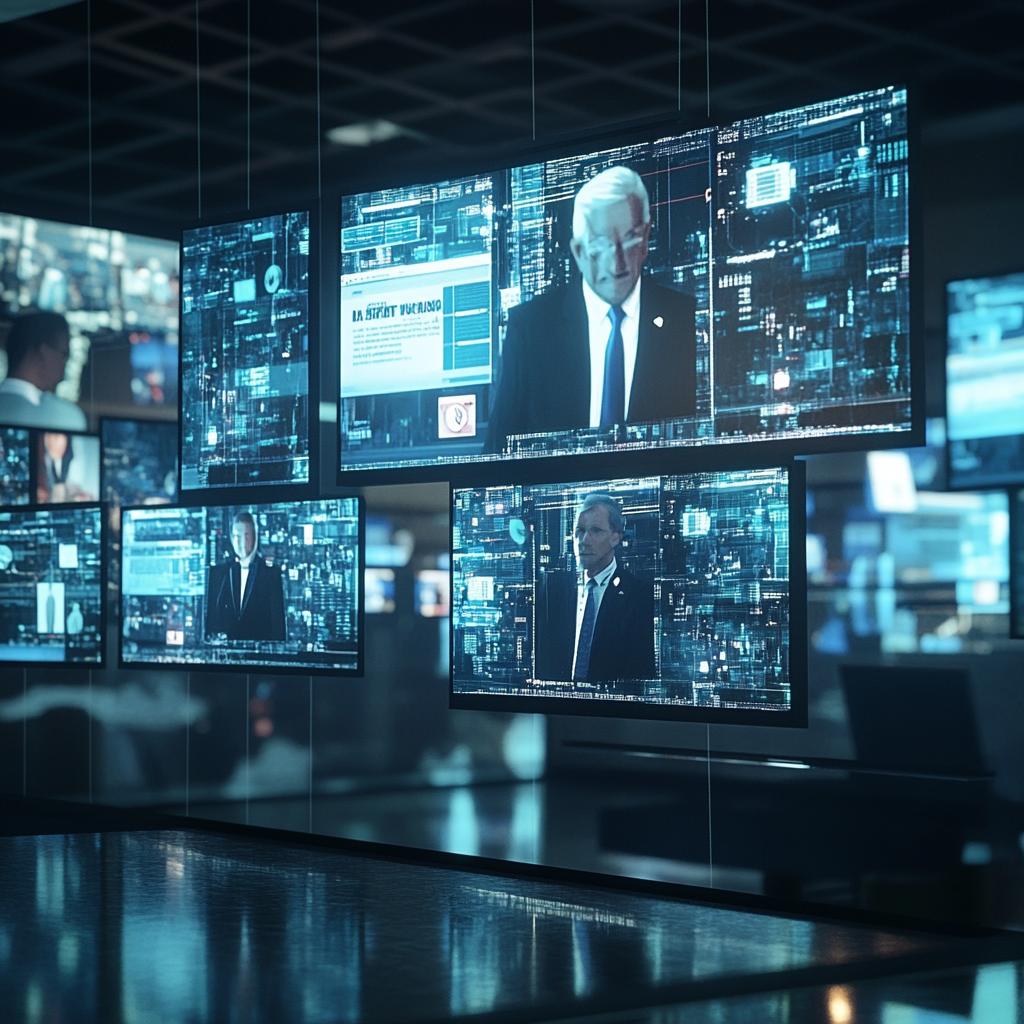
“Navigating Political Divides in AI Media Coverage: Bias, Regulation, and the Future of Journalism”
Unraveling the Political Quilt of Media Coverage on AI: A Chaotic Stitch and a Stitch for Change
The world of artificial intelligence (AI) spirals forward in an exhilarating dance of innovation, yet underneath this energetic choreography lies a shadowy narrative twisted and contorted by the political sway of the times. The media, once regarded as the noble guardian of unbiased truth, seems to have become embroiled in a political quagmire when it comes to covering AI. A recent avalanche of studies reveals startling discrepancies, presenting an image that isn’t just about technology but also about how politics crafts perceptions, policies, and practices surrounding AI.
The Political Bias in AI Systems: A Slanted Perspective
Imagine you’re at a buffet, and all you can see are dishes stacked on one side; that’s how the political leanings of AI systems feel—lopsided and skewed. A prominent report from the Manhattan Institute opens our eyes to a glaring issue: many conversational AI platforms seem to harbor a preference that tilts leftward. Yes, you heard that; an artificial construct programmed in the heart of Silicon Valley seems to have an opinion. David Rozado’s research indicated that while the substantial figure of $500 billion in AI infrastructure is being poured in during the Trump era, the very systems we rely on are spouting political biases that threaten the very fabric of our democratic conversations[1].
Dismantling the Findings: Rozado embraced a slew of methodologies that would make any scientist proud. He juxtaposed AI-generated prose with the rhetoric of members of Congress, probed into AI-generated policy scripts, and gauged attitudes towards prominent figures. What did he casually unearth? Google’s Gemma 1.1 and Meta’s Llama 2 emerge as the shy wallflowers of political bias, while big guns like OpenAI’s GPT-4 and Google’s Gemini 1.5 Pro broadcast their political banners with gusto.
The ramifications of this bias are nothing short of alarming. They could lead to cognitive dissonance, ideological groupthink, and shattered trust in the very technologies which promise to bring us together.
Generative AI: The Puppet Master in Political Campaigns
When it comes to the political playground, generative AI is the kid with the shiny new toy—both captivating and frightening. A working paper from Media Engagement paints a vivid picture of generative AI in the frenetic landscape of the upcoming 2024 U.S. elections. It uncovers how manipulative forces are leveraging this technology for concocting disinformation, delivering hyper-targeted messaging, and fabricating deepfakes that twist the truth like a simulated magician’s trick[2].
-
The Players: Campaign consultants and political hopefuls are brokering their futures with AI, crafting narratives that can either catapult them to victory or plunge them into infamy. Yet, here lies the rub: governmental oversight resembles Swiss cheese—full of holes. The Federal Election Commission has made tentative proposals to curb "deceptive" generative AI, but skepticism reigns among Republican commissioners as to whether the agency has the authority to enforce any rules.
-
Local Realities: It gets even murkier when you consider local elections, where generative AI flits about undetected, a stealthy puppet master pulling strings with reckless abandon.
AI Takes a Seat in the Newsroom: A Double-edged Sword
Now, let’s stroll into the bustling hub of journalism, where AI has found entry as both a boon and a bane. A worthy study from the University of Florida delved into the intricate ballet between AI-generated articles and their human counterparts and exposed the lack of emotional depth in AI’s storytelling[3].
-
Language Matters: While AI may adequately dance around core topics, it lacks the tonal subtleties that resonate with the human experience—minus the irreplaceable touch of a seasoned journalist who knows when to bring the drama. Here’s a twist: the study revealed that AI-generated news tackled sensitive subjects like race and gender with less bias compared to their human-produced peers. Isn’t that ironic?
-
Profound Implications: This finding raises a clarion call for transparency in how AI is rolled out in newsrooms. We must tread carefully, or we risk AI becoming merely a conveyor belt for an even greater divide in public discourse.
The Media Bias Detector: AI Meets Analytical Vigilance
In yet another intriguing development, the University of Pennsylvania’s Computational Social Science Lab has conceptualized an AI-powered Media Bias Detector. This snazzy tool functions like a media watchdog, employing GPT-4 to dissect news articles and discern biases across media outlets[5].
-
The Mechanics: This generously-equipped detection device evaluates articles by topic and tonal shifts down to the sentence level, blending human insight with machine computation for a more accurate picture.
-
Illuminating Insights: The Detector reveals the favoritism that branches from one publisher to another, suggesting a jigsaw puzzle of differing narratives worthy of analysis. Such validation empowers readers to navigate the murky waters of media bias and dredge up the truth from the sludge of partisanship.
Regulatory Whirlwinds: Ethical Questions Emerge
As AI infiltrates newsrooms and political corridors alike, a tempest of regulatory and ethical quandaries surfaces. A thought-provoking report from the Columbia Journalism Review brings to light the unsettling concentration of AI control by technology titans, uprooting the very ideals of public representation and accountability[4].
-
Dependence Despairs: News organizations find themselves entangled in a web spun by major tech firms, which could redefine the ownership of their outbreaks of creativity.
-
Regulatory Gaps: We stand at the precipice of a darker future where the absence of regulations helps biases bloom and misinformation proliferate unchecked.
-
Balancing Act: In this heady landscape, the need for practical frameworks looms large, ensuring a balance between cutting-edge innovation and the dire need for transparency.
In Reflection: The Dissonance of Media and AI
The narrative crisscrossing media coverage of AI is undoubtedly torn along political lines, mirroring the fractals of society at large. With AI rapidly transforming landscapes from politics to journalism, our collective focus must pivot toward addressing the biases lurking in the shadows and championing transparency as the primary goal.
Takeaway nuggets linger here, glistening as beacons in the fog:
- Bias Busting: It’s vital to tackle biases within AI systems swiftly; lest we amplify the schisms growing in our political fabric.
- Regulatory Backbone: Establishing comprehensive regulations around the use of AI in various sectors becomes a non-negotiable item on our agenda.
- Empowering the Public: Tools like the Media Bias Detector are indispensable in opening the public's eyes to the creative manipulation of narratives, great for discerning the truth from the polished pool of misinformation.
Be Part of the Journey
Want to stay up to date with the latest news on neural networks and automation? Subscribe to our Telegram channel: @ethicadvizor. Engage in a conversation that lights the way towards a future where AI serves humanity—not the whims of political agendas. Join us and empower yourself in navigating the exciting yet, at times, murky waters of AI and its impact!

